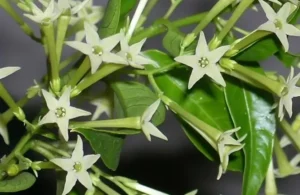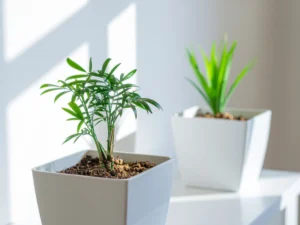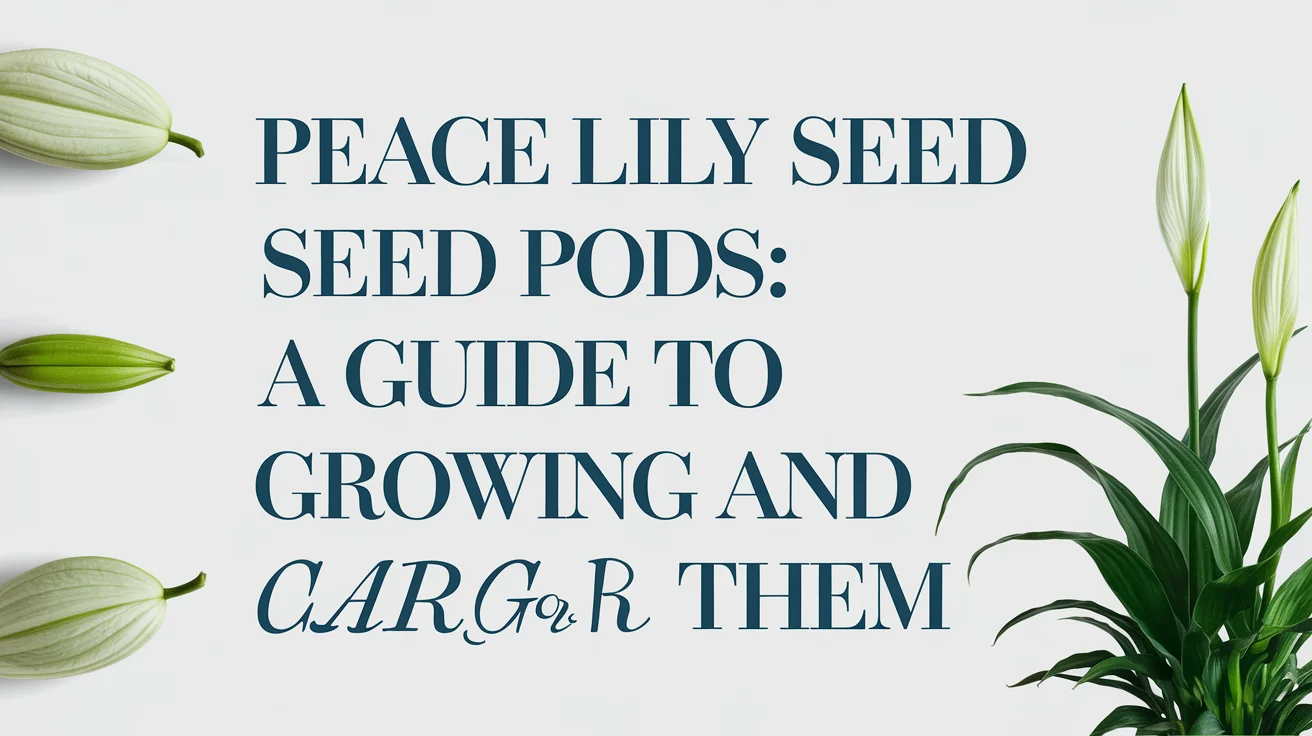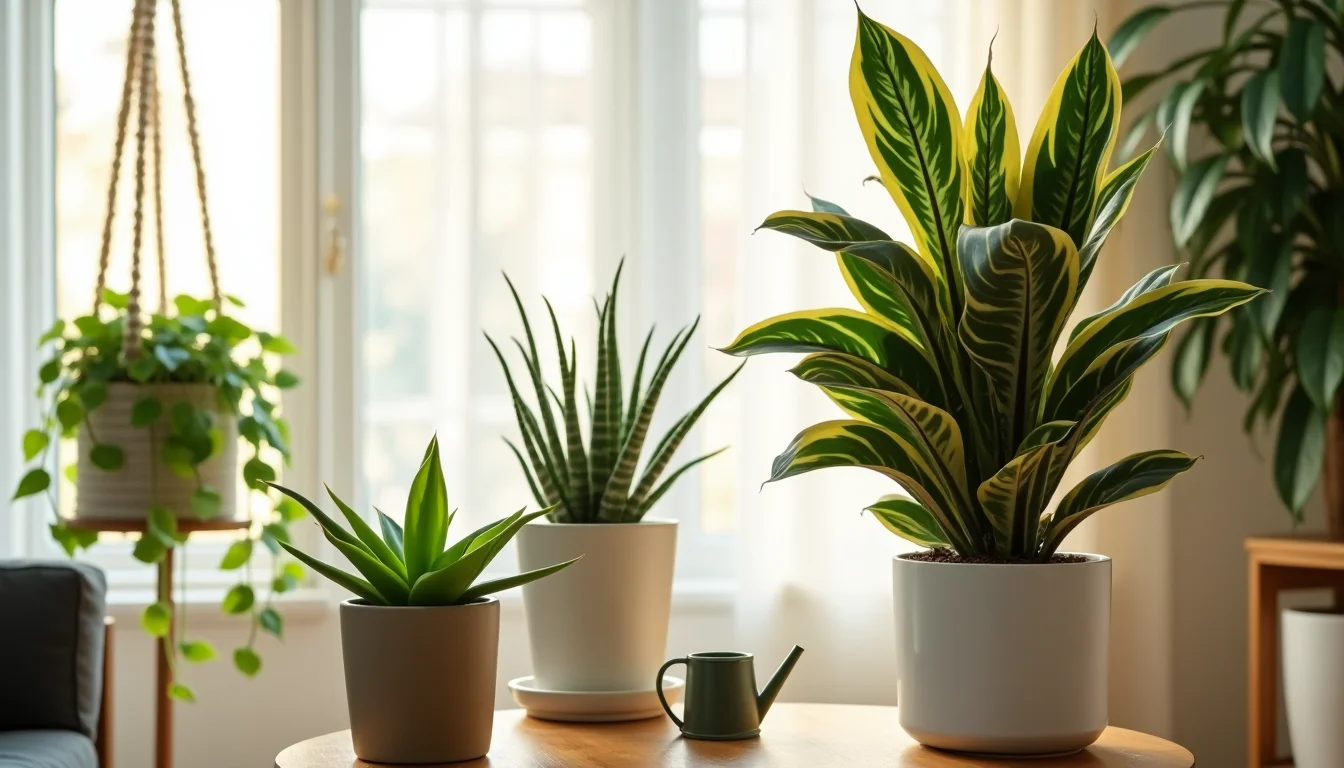If you are asking, “Is an aloe plant a cactus?” you are not alone. Many plant enthusiasts confuse aloe and cactus due to their similar appearance and succulent nature. However, despite their resemblance, they are not the same plant.
Aloe plants belong to the Asphodelaceae family, while cacti are part of the Cactaceae family. Therefore, understanding the distinctions between them is crucial for proper care, gardening, and even medicinal use. In this guide, we will explore the botanical differences, physical traits, care instructions, and frequently asked questions to help you identify and grow these plants successfully.
Botanical Classification: Is an Aloe Plant a Cactus?
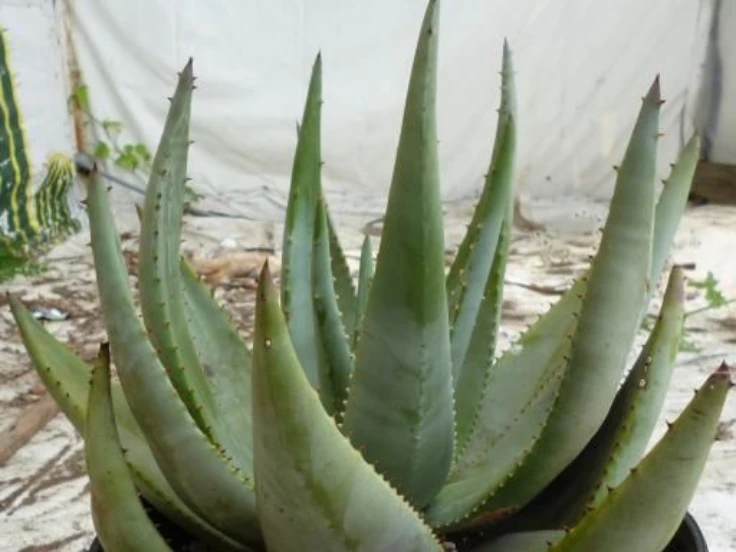
Aloe Classification: Why Aloe Is Not a Cactus
Aloe plants, including the well-known Aloe vera, belong to the Asphodelaceae family, which contains over 450 species. These plants are native to regions like Africa, Madagascar, and the Arabian Peninsula.
Moreover, aloe plants are recognized for their thick, fleshy leaves arranged in rosettes. In addition, they are widely used for medicinal and cosmetic purposes due to the gel found in their leaves. For more insights, see this cactus or aloe vera guide.
Cactus Classification: Understanding the Cactus Family
Cacti belong to the Cactaceae family, which includes more than 1,500 species native to the Americas (Epic Gardening).
Unlike aloes, cacti have specialized structures called areoles, from which spines, branches, and flowers grow. Furthermore, most cacti lack traditional leaves, which helps them conserve water in harsh desert climates.
Key Takeaway: Aloe vs. Cactus
Although both aloe and cactus are succulents, their botanical classifications differ significantly. Consequently, gardeners must understand these differences to provide proper care and ensure healthy growth.
Native Habitats: Where Do Aloe Plants and Cacti Grow?
Understanding where these plants originate helps explain their growth patterns and care needs.
-
Aloe: Native to tropical and arid regions in Africa, Madagascar, and the Arabian Peninsula. Aloe plants can adapt to various climates; however, they prefer warm, sunny conditions.
-
Cactus: Native primarily to the Americas, cacti thrive in deserts and semi-arid regions. Therefore, their structure is adapted to survive extreme heat, low humidity, and infrequent rainfall.
Transitioning from the native habitat to your home environment requires adjustments in watering, soil type, and light exposure. Thus, replicating the ideal conditions will help the plants thrive.
Physical Traits: Is an Aloe Plant a Cactus?
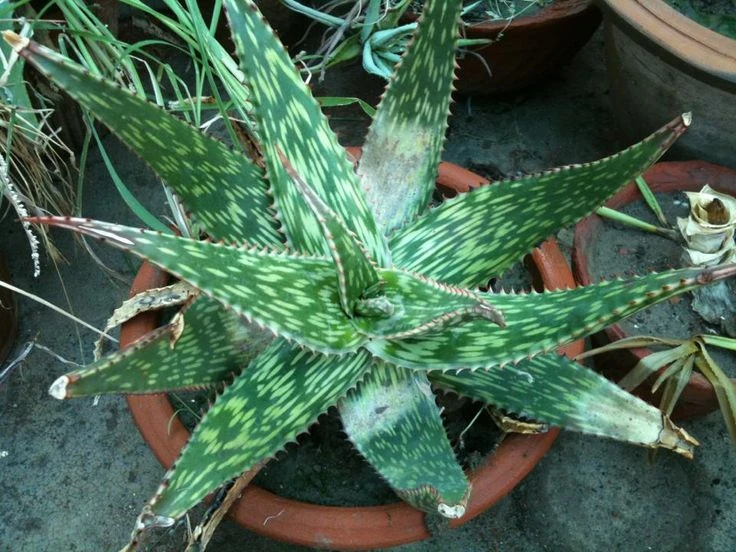
Aloe Physical Traits: Leaf and Flower Characteristics
-
Leaves: Aloe leaves are thick, fleshy, and arranged in a rosette pattern. In addition, the leaf margins may have small teeth, but they do not develop large spines.
-
Flowers: Aloe flowers are tubular, often bright orange or yellow, and grow on tall stalks.
-
Stem: Most aloe species have short or no visible stems. Consequently, their leaves are the main storage organ for water.
Cactus Physical Traits: Spines, Flowers, and Stems
-
Leaves: Most cacti have no traditional leaves. Photosynthesis occurs in the green stem.
-
Spines: Cacti have spines that grow from areoles. These spines protect the plant and reduce water loss.
-
Flowers: Cactus flowers are large, showy, and emerge from the areoles. Meanwhile, their blooming cycle varies depending on species and environmental conditions.
Summary of Physical Differences
| Feature | Aloe Vera | Cactus |
|---|---|---|
| Botanical Family | Asphodelaceae | Cactaceae |
| Leaves | Thick, fleshy, rosette-shaped | Reduced or absent |
| Spines | Small teeth on leaf margins | Prominent spines from areoles |
| Flowers | Tubular, bell-shaped | Large, showy from areoles |
| Stem | Short or absent | Green, photosynthetic stem |
Care Requirements: How to Care for Aloe Plants vs Cacti
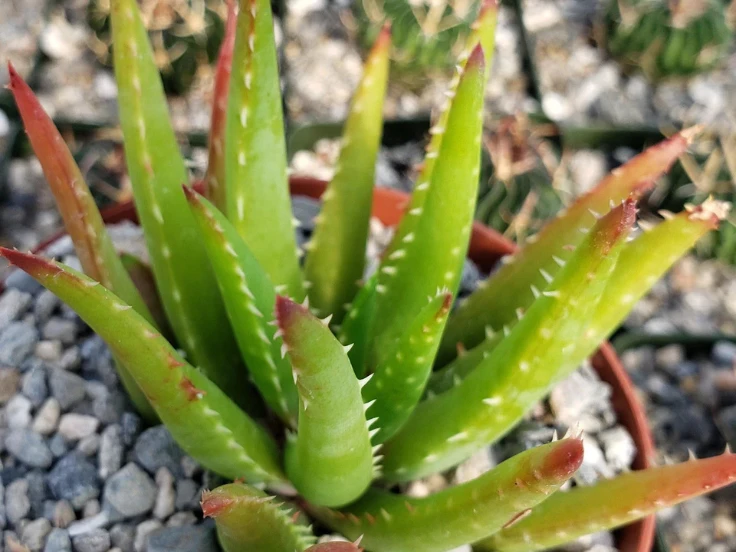
Aloe Care: Watering, Sunlight, and Soil Needs
-
Watering: Water sparingly. Allow the soil to dry completely before the next watering. Overwatering can cause root rot.
-
Light: Aloe prefers bright but indirect sunlight. Direct sunlight may burn the leaves; therefore, monitor the exposure carefully.
-
Soil: Use well-draining soil, ideally a cactus or succulent mix.
-
Temperature: Aloe thrives in temperatures between 59°F and 77°F (15°C to 25°C). Moreover, avoid exposing the plant to frost.
Cactus Care: Optimal Growing Conditions
-
Watering: Water only when the soil is completely dry. Consequently, cacti tolerate drought better than aloe.
-
Light: Requires full sun exposure. In addition, adequate light prevents etiolation and ensures proper growth.
-
Soil: Use sandy, well-draining soil. Otherwise, heavy soil can cause root rot.
-
Temperature: Cacti tolerate higher heat than aloe but may not survive frost without protection.
Transitioning from aloe to cactus care involves adjusting the water schedule, sunlight exposure, and soil type. Thus, replicating each plant’s natural habitat is critical for growth.
Benefits and Uses: Why Aloe Is Not a Cactus
Aloe Benefits: Medicinal and Cosmetic Uses
Aloe is widely known for its medicinal and cosmetic benefits. The gel inside the leaves can be used for:
-
Treating burns and cuts
-
Skin hydration and soothing
-
Anti-inflammatory purposes
-
Digestive health when consumed properly
In addition, aloe is easy to propagate and can thrive indoors, making it an excellent houseplant.
Cactus Benefits: Ornamental and Practical Uses
Cacti are mostly ornamental but can provide benefits such as:
-
Water conservation landscaping
-
Air purification
-
Edible fruits like prickly pear
Similarly, cacti are low-maintenance and ideal for dry climates, which makes them popular among beginners.
Frequently Asked Questions
1. Can aloe vera be considered a cactus?
No. Aloe vera is not a cactus. While both are succulents, they belong to different botanical families and have unique characteristics.
2. Are all succulents cacti?
No. While all cacti are succulents, not all succulents are cacti. Examples of non-cactus succulents include aloe, agave, jade plants, and echeveria.
3. How do you identify a cactus?
Look for areoles, small cushion-like structures from which spines, branches, or flowers grow. If present, the plant is likely a cactus.
4. Can aloe grow like a cactus?
Aloe can survive in dry, sunny conditions similar to cacti; however, it generally prefers indirect sunlight and slightly more water than most cacti.
5. Are aloe plants safe for pets?
Some aloe species, including aloe vera, are toxic to cats and dogs if ingested. Therefore, always keep aloe out of reach from pets.
Conclusion: Understanding “Is an Aloe Plant a Cactus?”
In conclusion, aloe plants and cacti are both succulents but are not the same plant. Aloe belongs to the Asphodelaceae family, while cacti belong to the Cactaceae family. They differ in leaf structure, spines, flowers, and care requirements.Understanding these differences allows gardeners to provide the proper environment for each plant, ensuring healthy growth and longevity.
Aloe provides medicinal and cosmetic benefits, while cacti offer ornamental beauty and drought resilience. For those interested in exploring more about aloe varieties and their unique uses, check out this guide on the different species of aloe vera. Therefore, both plants are excellent choices for succulent enthusiasts.

